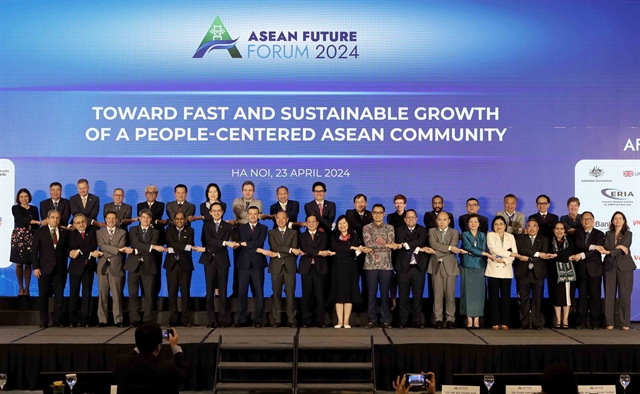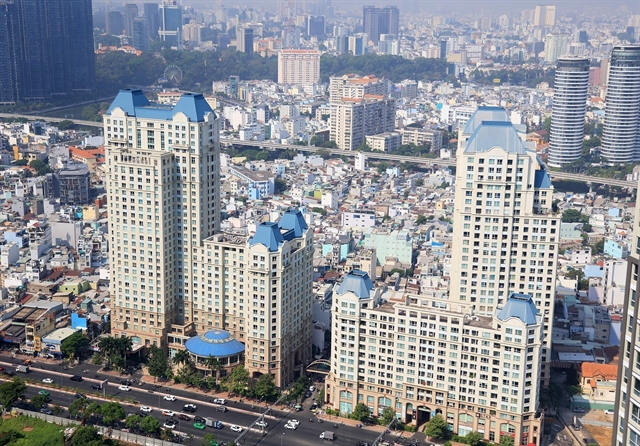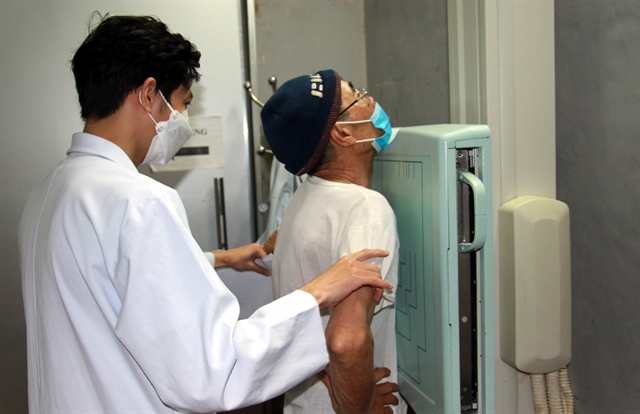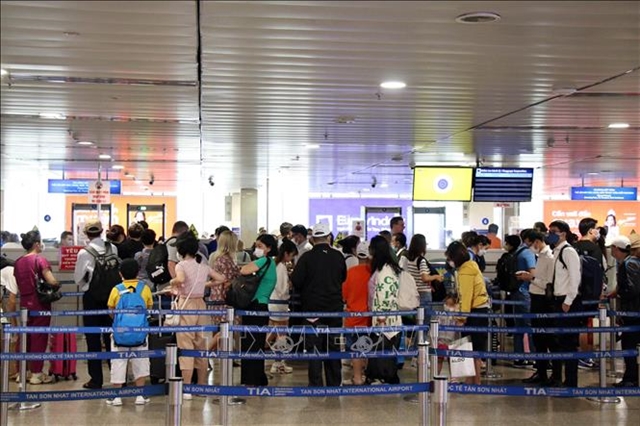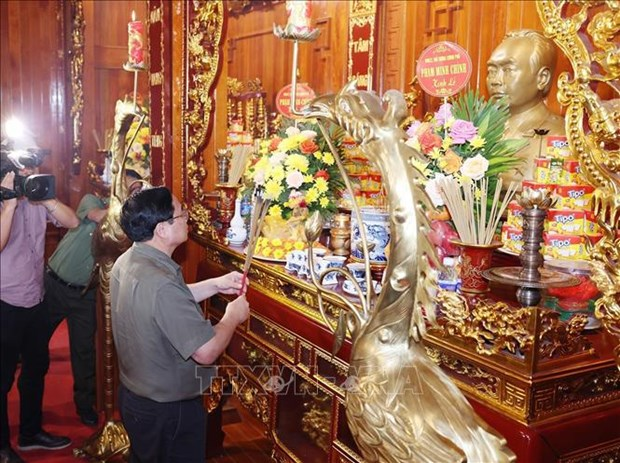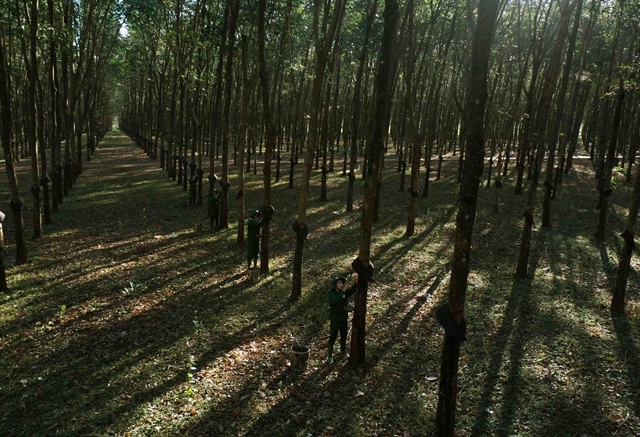 Economy
Economy

Natural rubber prices have been falling since the second half of 2017, causing rubber enterprises to become cautious in making business plan for 2018.
 |
| Workers exploit rubber latex in the central province of Quảng Nam. — VNA/VNS Photo Vũ Công Điền. |
HÀ NỘI — Natural rubber prices have been falling since the second half of last year, making rubber enterprises pause for thought before making business plan for 2018.
Rubber prices now stand at about VNĐ36 million per tonne (US$1,600), down 10 per cent compared with last year.
Some major rubber producers have also performed poorly in the first two months of the year.
Đông Phú Rubber (DPR), a subsidiary of the Việt Nam Rubber Group (VRG), plans to sell rubber at an average of VNĐ36.56 million per tonne, down 8.4 per cent compared to 2017. The company hopes to earn nearly VNĐ732 billion in revenue and VNĐ190 billion in gross profit, down 12.5 per cent and 25.3 per cent year-on-year, respectively.
DPR’s average rubber selling price was VNĐ36.6 million per tonne in the first two months of this year, down 25 per cent year-on-year, which led to a 2-per-cent drop in revenue to VNĐ112 billion, and therefore bringing gross profit down from VNĐ63 billion to VNĐ47.4 billion.
Of the gross profit, profit from rubber production was VNĐ9.2 billion, down nearly VNĐ18 billion compared to the same period last year.
Similarly, in 2018, Phước Hòa Rubber Co (PHR) plans to sell rubber at an average price of VNĐ37 million per tonne, significantly lower than 2017’s price of VNĐ40.39 million per tonne.
Nonetheless, thanks to revenue from other sources, PHR’s 2018 business plan is expected to be equivalent to 2017, with VNĐ1.6 trillion in revenue and VNĐ400 billion in pre-tax profit.
The company also earns revenue from other sources, such as revenue of the hand-over of land for the operation of industrial parks, including the Việt Nam-Singapore Industrial Parks in the central province of Nghệ An and the Nam Tân Uyên Industrial Zone in the southern province of Bình Dương.
It also leases land for the operation of Tân Bình industrial park in HCM City.
Another producer, Tây Ninh Rubber JSC (TRC), plans to sell rubber at an average price of VNĐ36.5 million per tonne, VNĐ1 million lower than last year. The company plans to achieve VNĐ498 billion in revenue and VNĐ113 billion in pre-tax profit, down 1 per cent and 31.5 per cent over the same period last year, respectively.
In addition, the company also lowered its target production output from VNĐ9,800 tonnes to 8,700 tonnes, processed output from 14,800 tonnes to 12,700 tonnes and productivity from 2.14 tonnes per hectare per year to 1.96 tonnes per hectare per year.
Although business plans for 2018 have not been announced yet, the business results of Hòa Bình Rubber Co (HRC) in the first two months of this year showed a decline.
During the two months, the company exploited 368.13 tonnes of rubber, reaching 14.16 per cent of the yearly plan (2,600 tonnes).
It purchased 247.6 tonnes while selling 377.23 tonnes, earning revenue of VNĐ12.95 billion.
HRC estimated that its first quarter’s revenue would reach VNĐ18.3 billion and after-tax profit would be VNĐ1.35 billion. Compared with the same period last year, revenue would increase slightly but after-tax profit would fall by 20.5 per cent.
In its strategy report of 2018, Việt Dragon Securities Co (VDSC) gave a negative assessment for the rubber cultivation industry in the short term but a positive one in the long-term.
Meanwhile, MayBank KimEng Securities Corp’s (MBKE) forecast that rubber prices may recover slightly due to some supportive information such as the Thai government announcing a price subsidy progamme of 20 billion baht since December 2014 and large rubber producers like Thailand, Malaysia and Indonesia agreeing to cut rubber exports.
Recently, the Thai government plans to issue bonds to raise 30 million baht (US$1 billion) to cut excess rubber, driving prices up. Thai Agriculture Minister Grisada Boonrach plans to cut about 1-3.3 million tonnes of excess rubber by the end of this year. — VNS

